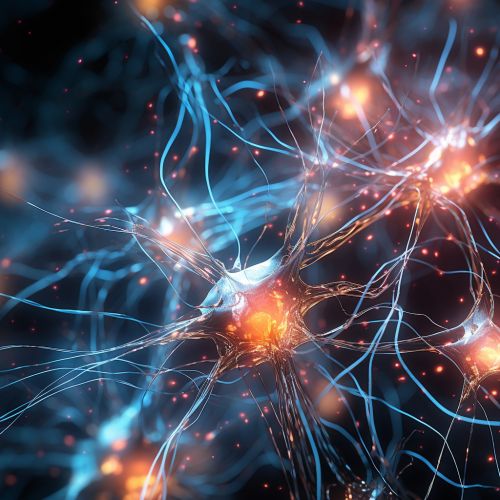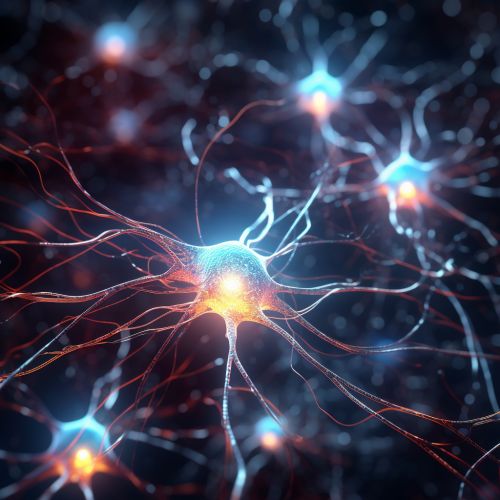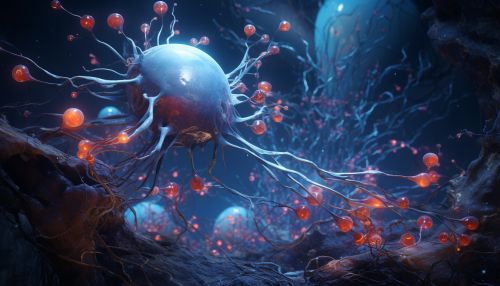The Biochemistry of Neurotransmitter Function
Introduction
Neurotransmitters are endogenous chemicals that enable neurotransmission. They transmit signals across a chemical synapse, from one neuron (nerve cell) to another 'target' neuron, muscle cell, or gland cell. Neurotransmitters are released from synaptic vesicles in synapses into the synaptic cleft, where they are received by neurotransmitter receptors on the target cells. Many neurotransmitters are synthesized from simple and plentiful precursors such as amino acids, which are readily available from the diet and only require a small number of biosynthetic steps to convert.


Biochemical Classification of Neurotransmitters
Neurotransmitters can be broadly classified into two types: small molecule neurotransmitters and larger neuropeptides. Small molecule neurotransmitters include amino acids, monoamines, and acetylcholine. Neuropeptides include endorphins and enkephalins.
Amino Acids
Amino acids are the building blocks of proteins and serve as precursors for the synthesis of neurotransmitters. The most common neurotransmitters derived from amino acids are glutamate, aspartate, D-serine, γ-aminobutyric acid (GABA), and glycine.
Glutamate
Glutamate is the most abundant neurotransmitter in the nervous system, serving as the primary excitatory neurotransmitter. It is synthesized from the amino acid glutamine via the enzyme glutaminase.
GABA
GABA, or gamma-aminobutyric acid, is the primary inhibitory neurotransmitter in the nervous system. It is synthesized from glutamate using the enzyme glutamic acid decarboxylase and coenzyme pyridoxal phosphate.
Monoamines
Monoamines are derived from aromatic amino acids like phenylalanine, tyrosine, and tryptophan, and the trace amine-associated receptor family includes dopamine, norepinephrine, epinephrine, histamine, and serotonin.
Dopamine
Dopamine is a neurotransmitter that plays several important roles in the brain and body. The brain includes several distinct dopamine systems, one of which plays a major role in reward-motivated behavior.
Serotonin
Serotonin, also known as 5-hydroxytryptamine (5-HT), is a monoamine neurotransmitter. Biochemically derived from tryptophan, serotonin is primarily found in the gastrointestinal tract, blood platelets, and the central nervous system of animals, including humans.
Acetylcholine
Acetylcholine (ACh) is a neurotransmitter that plays a key role in muscle contraction, sensation, and memory formation. It is synthesized from choline and acetyl coenzyme A.
Neuropeptides
Neuropeptides are small protein-like molecules used by neurons to communicate with each other. They are typically released from synaptic vesicles in the axon terminal, in a manner similar to that of small-molecule neurotransmitters.
Endorphins
Endorphins are endogenous opioid neuropeptides. They are produced by the central nervous system and the pituitary gland.
Enkephalins
Enkephalins are pentapeptides involved in regulating nociception in the body. The enkephalins are termed endogenous ligands, as they are internally derived and bind to the body's opioid receptors.
Neurotransmitter Synthesis, Storage, and Release
Neurotransmitters are synthesized in the neuron from precursors, typically amino acids, which are taken up from the blood. They are then stored in vesicles at the nerve terminal. When an action potential reaches the nerve terminal, the neurotransmitters are released into the synaptic cleft, where they bind to receptors on the postsynaptic neuron.


Neurotransmitter Receptors and Signal Transduction
Neurotransmitter receptors are located on the cell membrane of postsynaptic neurons and effectors such as muscle cells. They are proteins that bind neurotransmitters released from presynaptic neurons. The binding of a neurotransmitter with its receptor triggers a series of events in the cell that results in a change in the cell's electrical state and, ultimately, its function.
Neurotransmitter Reuptake and Degradation
After a neurotransmitter has been released into the synaptic cleft and has had a chance to bind to the postsynaptic receptors, it is removed from the synaptic cleft. This can occur through reuptake, in which the neurotransmitter is taken back into the presynaptic neuron to be reused, or through degradation, where enzymes break down the neurotransmitter.
Pathologies Associated with Neurotransmitters
Disruptions in neurotransmitter systems contribute to a wide range of diseases, including neurodegenerative diseases, psychiatric disorders, and drug addiction. For example, a decrease in the amount of dopamine in the brain is associated with Parkinson's disease, while an increase is associated with schizophrenia. Similarly, an increase in the amount of norepinephrine and serotonin is associated with depression.
